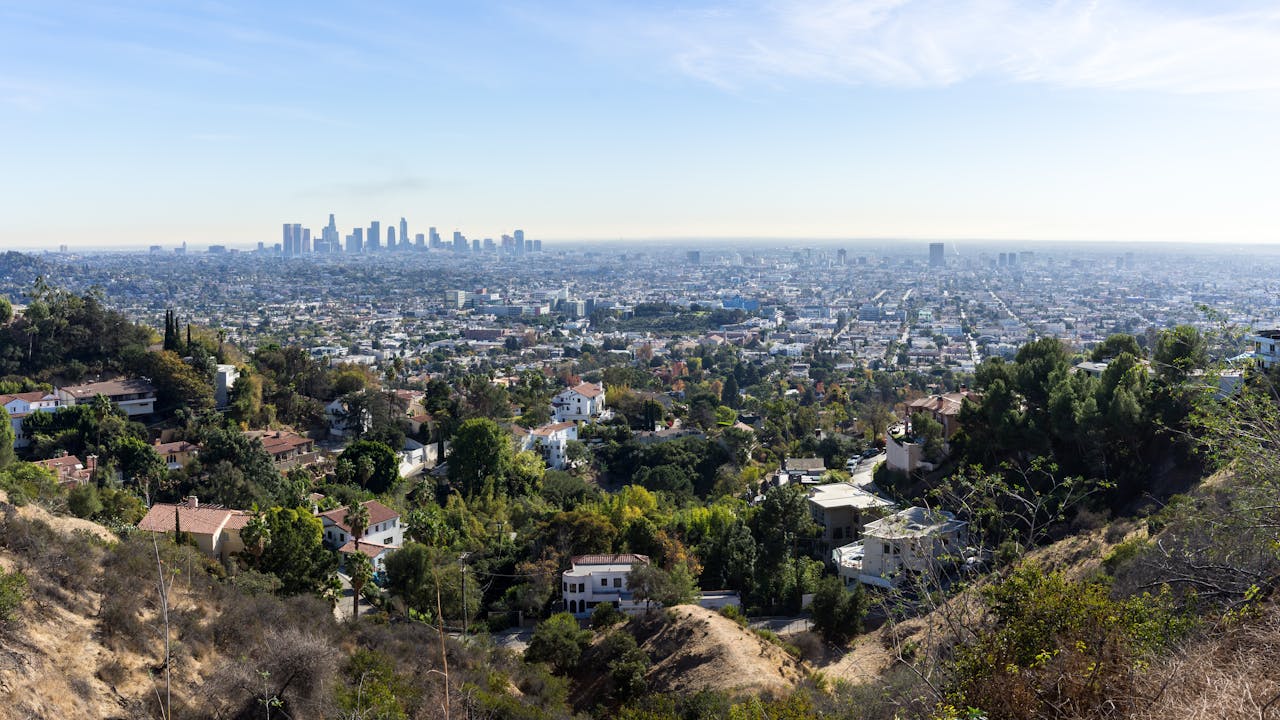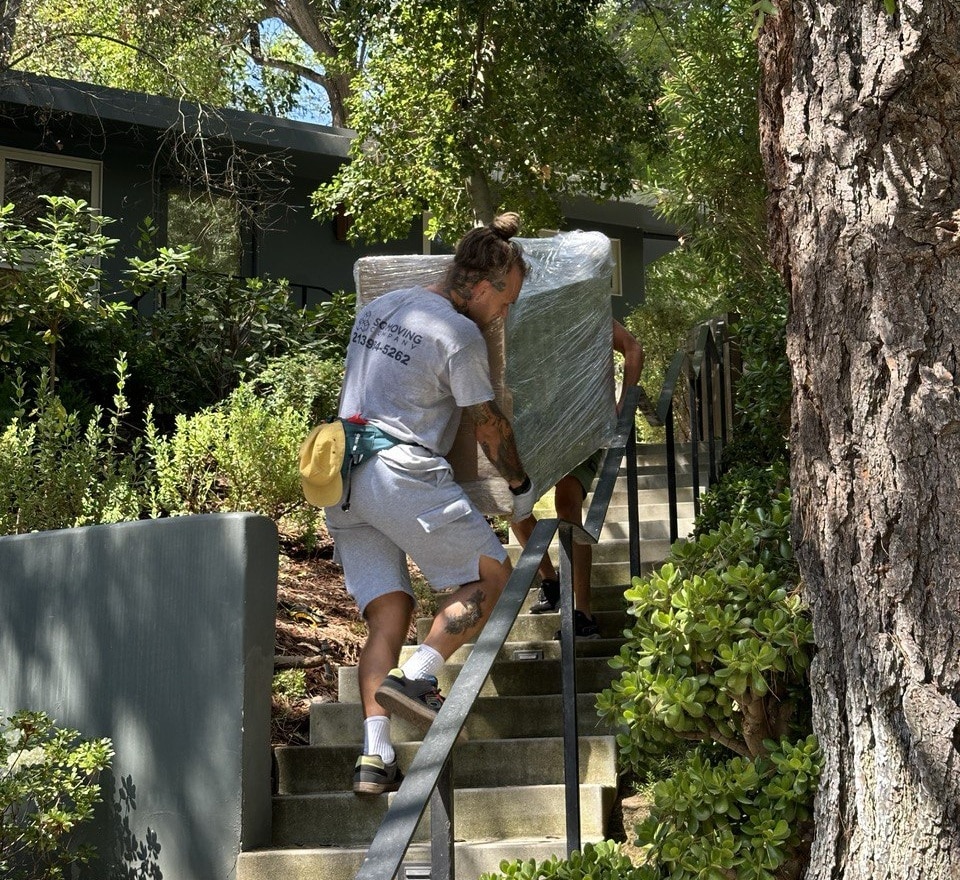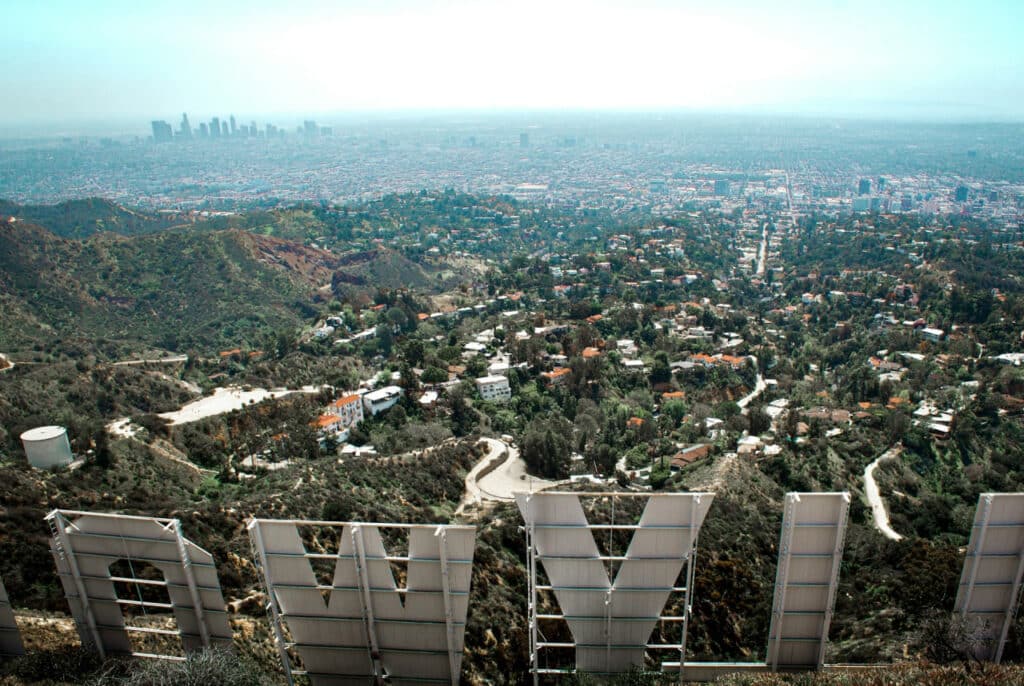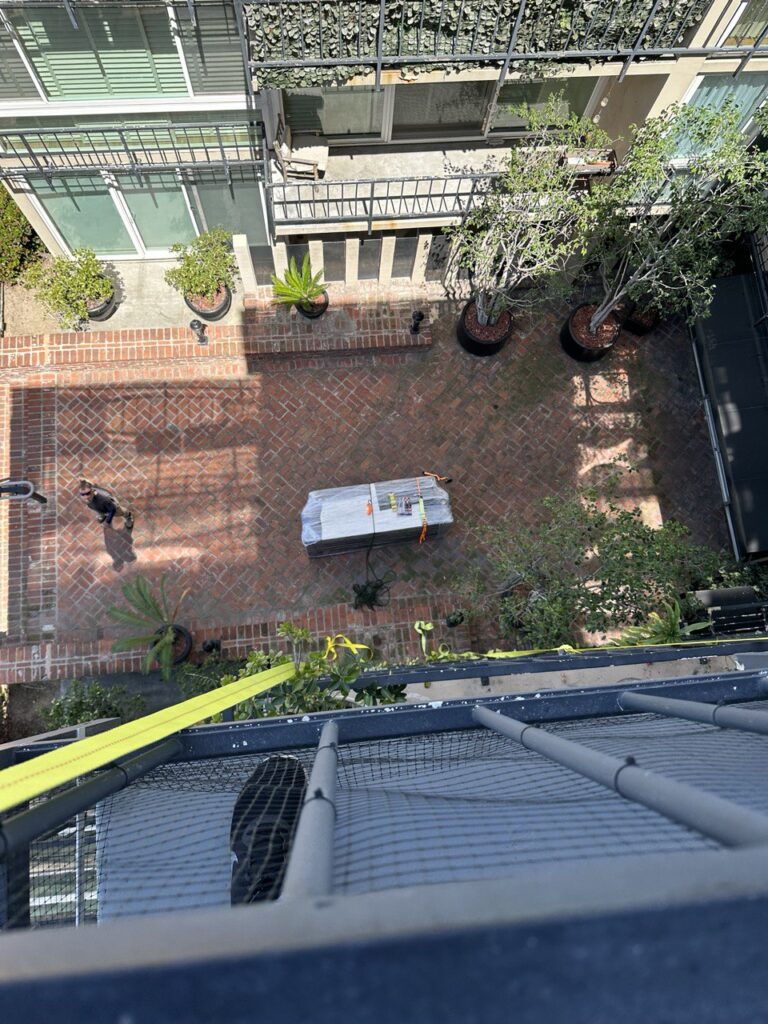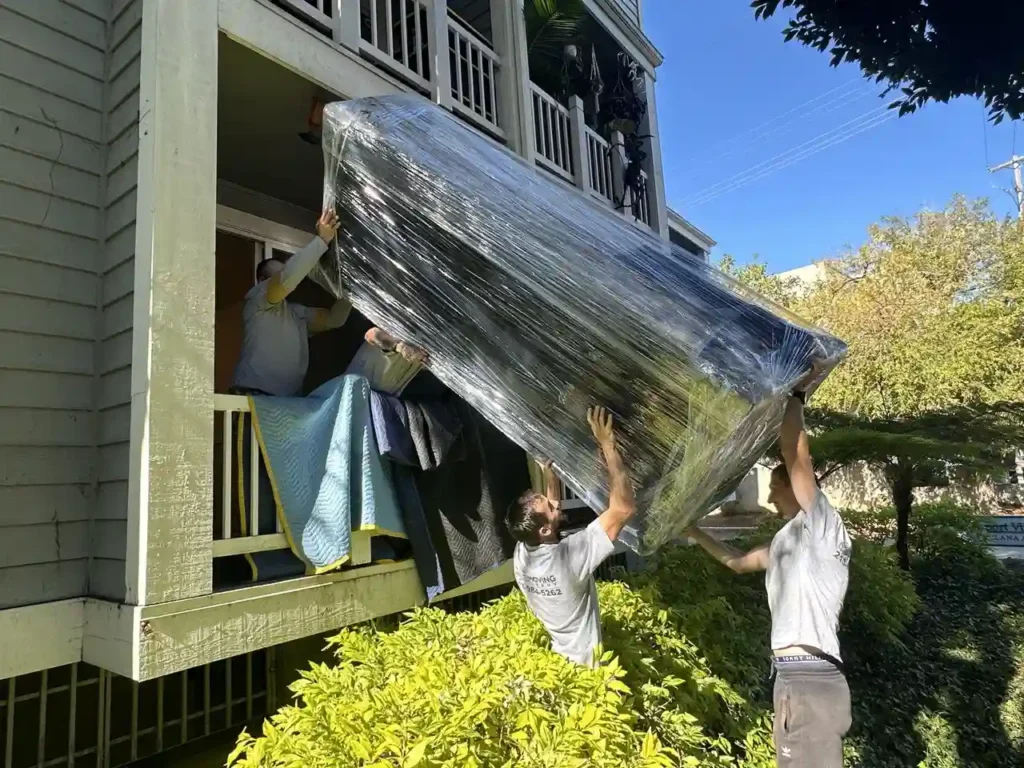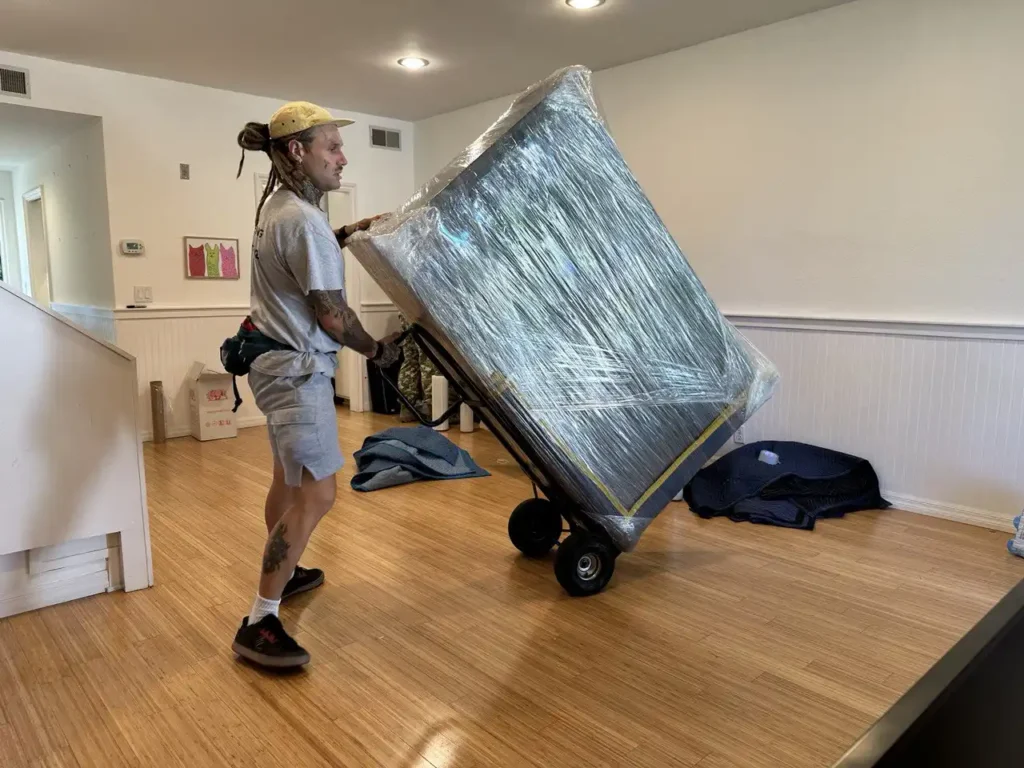Living in the hills of Los Angeles is a dream that many people chase — and for good reason. The views feel like movie backdrops, the air is cleaner, and most hillside homes offer the privacy that flat city neighborhoods simply can’t match. When you live above the noise, you finally understand what people mean when they say Los Angeles is beautiful. The light is different. The breeze is different. And even the silence is different — especially at night, when you can step outside and hear nothing but wind or wildlife.
But before you enjoy that feeling, you have a major project ahead of you: moving into the hills.
People often underestimate how different hillside moving is compared to a normal relocation between flat residential streets. It’s not harder in a way that should scare you — it just requires planning, experience, and the right crew who knows how to handle elevation, access, and expensive belongings. Most of the houses above the city weren’t built with giant moving trucks in mind, so you’re navigating tight corners, long staircases, steep slopes, and limited parking options. And that’s before we even talk about HOA rules, fire-zone conditions, or what happens when a couch needs to go through a second-floor balcony because it doesn’t fit through the hallway.
So, if you’re planning a move into a hillside neighborhood in Los Angeles — like Hollywood Hills, Beverly Hills Post Office area, Bel Air, Laurel Canyon, Brentwood Hills, Studio City hills, Topanga Canyon, Palos Verdes Peninsula, or Rolling Hills — this guide will prepare you for what to expect.
Let’s start with the biggest question most people have:
Why Are People Moving to the Hills of Los Angeles?
Everyone has their own reason, but here are the most common advantages of living uphill:
If you’re moving to Hollywood area and want a smooth, professional transition, check out our dedicated page for moving to Hollywood — where you’ll find tailored tips and the right team for the job.
Peace You Can’t Buy on the Flats
The higher you go, the quieter it gets. No bus engines. No loud sirens. No neighbors arguing through windows.
“You don’t realize how loud the city is until you’re away from it,” one of our recent customers told us after moving to the Hollywood Hills.
Views That Change Your Routine
Sunrise. Sunset. City lights. Ocean horizon when weather permits. You start planning meals and coffee breaks around what the sky looks like.
Health Benefits and Cleaner Air
The further you are from congested freeways, the less smog you breathe daily. Hillside breezes create their own airflow — cool, refreshing, comfortable.
Homes With Real Creativity
Flat neighborhoods rely on square box construction. Hillside homes must adjust to the terrain — which means:
- Unique architecture
- Multi-level layouts
- Floor-to-ceiling windows
- Decks and patios built into the hillside
You don’t see the same house twice.
Privacy That Feels Natural
Tall gates aren’t the only divider — the terrain itself protects your peace. Many hillside properties hide from street view, adding security.
That emotional “breath of fresh air” is a major reason people look up toward the hills. But now let’s talk about the move itself, because hillside moving follows a very different set of rules.
What Makes Moving to LA Hillside Homes So Different?
If you’ve only ever moved between regular streets, hillside moving will surprise you. The higher you go, the more the environment dictates your strategy.
Here are the main challenges we solve every week:
1. Roads Are Narrow, Steep, Winding — and Sometimes One-Way
Not every moving truck can make the turns you’ll find in:
- Laurel Canyon
- Beachwood Canyon
- Upper Hollywood Hills
- Beverly Hills canyon roads
- Mulholland Drive frontage streets
That’s why professional hillside movers bring:
- Shorter wheelbase trucks
- Experienced drivers who know the terrain
- Backup shuttle vans when the main truck can’t reach the house
A shuttle system may take 2-3 trips, but it prevents delays, accidents, and property damage.
2. Parking Requires Strategy
You can’t just park anywhere uphill. Often the truck:
- Can only use a small section of road shoulder
- Must avoid blocking fire lanes
- Needs a reserved spot arranged through the city
- Has to operate with a traffic guide (spotter) for safety
This isn’t optional — it’s the law in many hillside streets.
Planning ahead avoids ticketing, rescheduling, or angry neighbors.
3. Multi-Level Homes Add Time (and Muscle)
Hillside homes are built up — not out.
That means:
- More stairs
- Steeper stairs
- Split-level floor transitions
- Tight corridor turns
Every step counts when carrying hundreds of pounds uphill.
4. Balcony Hoisting Is Common
It happens in at least 1 of every 6 hillside moves:
Furniture won’t fit up the stairs, so movers must lift it externally.
Examples:
- Sofas
- Beds
- Dining tables
- Large art pieces
If the movers aren’t trained for rigging, you’re risking expensive damage.
If you’re relocating to the Los Angeles hills, don’t miss our detailed guide on how to pack and move a couch – step-by-step instructions. It’s full of practical tips to help you move large furniture smoothly into multi-level hillside homes.
5. Fire-Zone Rules Affect Timing
Wildfire awareness is part of the hillside lifestyle. During red-flag warning days:
- Access roads may close
- Load/unload zones may be restricted
- Outdoor furniture must be staged away from brush
It’s temporary — but serious.
6. HOA and Security Protocols
Especially in:
- Rolling Hills
- Bel Air
- gated portions of Hollywood Hills
- communities above Sunset and Benedict Canyon
Expect requirements like:
- Insurance paperwork in advance
- Move-in time windows (often weekdays only)
- Restricted truck sizes
Professional movers handle approvals to keep things smooth.
Where People Move Most Frequently in the Hills
Here’s a quick guide based on what real movers see daily:
| Neighborhood | Experience | Pros | Challenges |
|---|---|---|---|
| Hollywood Hills | Creative homes & nightlife | Close to studios & views | Tight roads, zero parking |
| Beverly Hills Hillsides | Luxury homes, gated privacy | Quiet courts & stunning architecture | HOA enforcement |
| Bel Air Hills | High-profile residents | Strong security | Trucks highly regulated |
| Brentwood Hills | Family-friendly | Great balance of city + nature | Staircases everywhere |
| Laurel Canyon | Historic and artsy | Great community feeling | Curve after curve |
| Studio City Hills | Easy Valley access | Hard to beat for convenience | Steep driveways |
| Topanga Canyon | Rustic lifestyle | Feels like a retreat | Fire zone policy |
| Rolling Hills (PV) | Space and fresh ocean air | Horse property + fences | Long private roads |
Each hill has its own personality — choosing depends on lifestyle.
What Customers Say After Moving to the Hills
One thing we love about hillside moves is hearing what residents learn along the way:
“I didn’t realize I’d be outside this much. The fresh air really does change your daily routine.”
— Nicolas, moved to Laurel Canyon
“Our WiFi needed boosters, but now movie nights on the patio are a ritual.”
— Sabrina, moved to Bel Air
“We organized groceries differently. But the peace? It’s worth any delivery confusion.”
— Marco and Liza, moved to Brentwood Hills
Most newcomers say they suddenly understand why so many celebrities choose the hills:
It’s the only part of Los Angeles that truly feels private.
Packing Smart — Because Hillside Homes Need Better Organization
Packing isn’t just about throwing items into boxes. Packing correctly is what prevents damage and confusion later — especially when dealing with a house that has multiple levels, tight corridors, or outdoor access routes. Here’s how to pack for a multi-level hillside home:
Label by Floor and Room
Instead of writing “Bedroom,” label boxes like:
- Master Bedroom – Level 3
- Guest Room – Level 1
- Office – Level 2 (Desk Items)
Your movers won’t have to guess where anything goes — and your back will thank you when unpacking.
Keep Heavy Items in Small Boxes
Books, canned food, tools — all of these belong in compact boxes. Going uphill with a 60-lb oversized box isn’t fun.
Protect Fragile Goods Generously
Every incline or bump is magnified on steep terrain. Bubble wrap and cushioning are essential.
Pack an “Open First” Box
This should include:
- Toiletries
- Chargers
- Bedsheets
- Nightwear
- Medication
- Coffee essentials (trust us)
You want your first night to feel like home — not a scavenger hunt.
Evaluate Access Early — Driveways, Stairs, and Turns
Access isn’t just about the road — it continues all the way to the furniture drop-off location. For example:
- Is the driveway steep enough that a truck can’t stay level?
- Is turning into the driveway tight with walls or landscaping?
- How many sets of stairs exist from the truck to the door?
- Are the stairs wide enough for large items?
- Is the home’s entrance on a different elevation than the truck?
We occasionally walk the property with the customer days before the move to make sure nothing is missed. Even small changes, like moving a planter or trimming a bush, can save 20–30 minutes of maneuvering.
“Will My Couch Fit?” — The Most Common Hill Question
Flat homes usually have straightforward access. Hillside homes do not.
You may run into:
- Spiral staircases
- Sharp corners
- Low overhangs
- Narrow decks
- Angled interior walls
- Floating staircases without space underneath
This is why hoisting is normal in the hills, not a special request.
We evaluate each large item and choose the safest path:
- Through the balcony
- Through a large sliding door
- Over a railing onto a deck
We use ropes, straps, and padding — nothing is rushed or forced.
Pricing Factors: What Makes Hillside Moves Cost More?
Hillside moving is precise work and generally takes longer. Here are the biggest cost drivers:
| Cost Driver | Explanation |
|---|---|
| Shuttle trucks | Used when the main truck can’t reach the home due to narrow or steep streets |
| Long carry distance | Many hillside homes are far from safe parking areas, increasing walking distance |
| Multiple staircases | More stair trips and careful handling increase labor time and safety focus |
| White-glove handling | High-value furniture, artwork, and specialty items require protective materials and expertise |
| HOA/regulation delays | Security check-ins, limited move windows, and access rules may slow progress |
| Fire-zone precautions | Weather restrictions or red-flag warnings can require timing adjustments |
Pro tip: We always recommend a visual estimate to avoid surprises — hillside moves cannot be accurately priced over the phone.
Equipment That Protects and Speeds Up Hillside Moves
A hillside relocation succeeds when the right tools are used. Here are just a few we rely on regularly:
- Liftgate trucks for large items
- High-traction dollies for steep paths
- Stair ramps to reduce impact and protect floors
- Padded corner guards for tight angles inside the home
- Floor runners for wood stairs and slick tile
- Furniture harnesses and straps for controlled lifting
- Hoisting and rigging systems for balcony entry
This equipment prevents damage — and reduces the amount of physical strain on movers.
What Homeowners Often Forget When Moving to the Hills
These are small things that can create big problems if unaddressed:
- Gate codes not activated on moving day
- Street parking signage changing the day before
- Trash cans blocking driveway access
- Delivery trucks assumed to “find the place” but can’t
- Expecting a cell signal in areas where maps don’t load
- Forgetting to check if tall or wide appliances fit upstairs
- No lighting on exterior stairs once the sun goes down
A quick checklist — and coordination with your mover — avoids all of these issues.
HOA & Neighborhood Coordination
Some hillside communities are very strict — especially gated neighborhoods.
Expect:
- Proof of moving company insurance
- Noise and time limitations
- Access only through certain gates
- Security escort or driver check-in
- Truck size restrictions (height and wheelbase)
We always recommend requesting HOA rules before scheduling your move start time.
Tips for Move-In Day in the Hills
Here’s how to keep things smooth:
- Start early — hillside roads get busier after 9am
- Keep driveways and hill paths clear of landscaping crews
- Ensure pets are secured away from all doors and gates
- Designate one family member as the “placement guide”
- Walk the route with movers before moving begins
After the Move: What Changes Living in the Hills?
Expect your life to feel different in several ways:
More Outdoor Time
Decks, patios, and gardens become part of daily life.
Better Sleep
The quiet hits you — in a very good way.
Grocery and Delivery Planning
People get used to:
- Grouping errands
- Precise address instructions
- Directing drivers by phone
Minor inconvenience, major view.
Stronger Community
Neighbors in the hills tend to look out for each other because access is limited — more conversations, familiar faces.
Guests Stay Longer
Because who wants to leave early when the sunset is that good?
Final Checklist Before Moving Day
Here’s a quick list you can print:
- Gate code active and tested
- Parking reserved with permit if needed
- Driveway clear and walkway safe
- Boxes labeled by room + level
- Furniture measured for stairs/balconies
- Fragile items packed with enough cushioning
- First-night essentials separated
- HOA rules confirmed
- Weather and fire-zone conditions reviewed
- Movers have correct directions and contact person
This checklist alone can reduce total move time by hours.
Why We Love Hillside Moves
Every hillside home brings its own challenges — and we love solving them. There’s a moment that always tells us the job was worth it:
When the customer steps out on their patio, looks across the hills or the ocean, takes a deep breath, and smiles.
That moment?
It’s the entire goal.
You enjoy the view — we enjoy helping you get there.
FAQ – Moving to the Hills in Los Angeles
Is moving to a hillside home more expensive than a regular move?
Yes, usually. Hillside homes often have limited truck access, steep driveways, and multiple staircases. More labor time, extra planning, and sometimes shuttle vehicles increase cost. A visual estimate is the best way to get accurate pricing for your move.
Do moving trucks always have access to hillside properties?
Not always. Many hillside streets are narrow or have sharp curves that large trucks can’t navigate. In those situations, movers use a smaller shuttle truck to safely move items in multiple trips.
What is a shuttle truck and why would I need one?
A shuttle truck is a smaller moving vehicle used when a full-size truck cannot reach your home. It’s common in places like Hollywood Hills, Laurel Canyon, and BHPO (Beverly Hills Post Office area), where road conditions limit access.
Can you move oversized items into homes with tight staircases?
Yes. When large furniture doesn’t fit through hallways or staircases, movers can use balcony hoisting and rope rigging techniques to safely move items through upper-level entry points.
Do hillside neighborhoods require special permits for movers?
Some do. For example, gated communities in Beverly Hills, Bel Air, and Rolling Hills often require Certificates of Insurance, scheduled move times, and parking approvals. Professional movers handle these documents for you.
Is moving to the hills risky during wildfire season?
Moves can still happen during fire season, but with precautions. Movers must follow Red Flag Warning regulations, keep flammable materials indoors, and ensure vehicles don’t block fire lanes.
Can movers help protect my hillside home during the unload?
Absolutely. Professional movers use floor runners, stair protection, corner guards, and padded covers to keep railings, walls, and floors safe while carrying items through tight spaces.
How early should I start planning my hillside move?
We recommend at least 4–6 weeks of planning. Scheduling movers early gives time to arrange parking, truck access inspections, HOA rules, and packing.
What should I pack separately for the first night in my hillside home?
A “first-night box” with essentials like toiletries, chargers, clothes, and bedding. After a big move, you’ll want easy access to comfort items without searching through boxes on multiple floors.
Why choose a company that specializes in hillside moving?
Experience matters. Movers familiar with hillside terrain know how to handle steep angles, long carry distances, valuable furniture, and tricky home entrances. It keeps the move safer, faster, and more organized.
Moving to a hillside home and want professionals you can trust? Our professional Hollywood Hills movers are ready to handle the heavy lifting and tight access so you can enjoy the views sooner.
Ready to Move to the Hills?
Whether you’re headed for a private Beverly Hills canyon, a trendy Hollywood Hills deck house, the rustic charm of Topanga, or the scenic landscapes of Rolling Hills — we’re here to make your relocation smooth, safe, and comfortable.
We’ll handle:
- Steep driveways
- Tight roads
- Multi-level unloading
- Delicate furniture protection
- Carefully timed logistics
- Stress-free planning
You just focus on enjoying your new home above the city.
SQ Moving Company
Your Hillside Moving Specialists in Los Angeles
Call: 213-984-5262
Quote Request: https://sqmoving.com
Your new view is waiting. We’re ready when you are.

